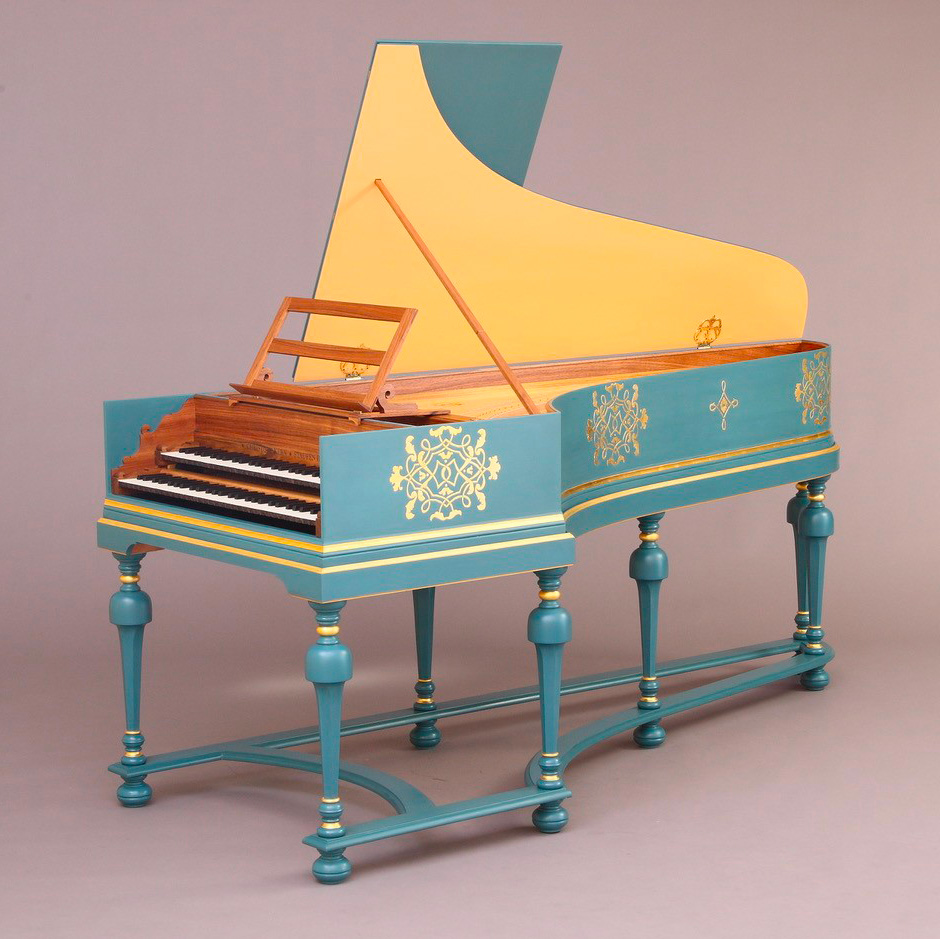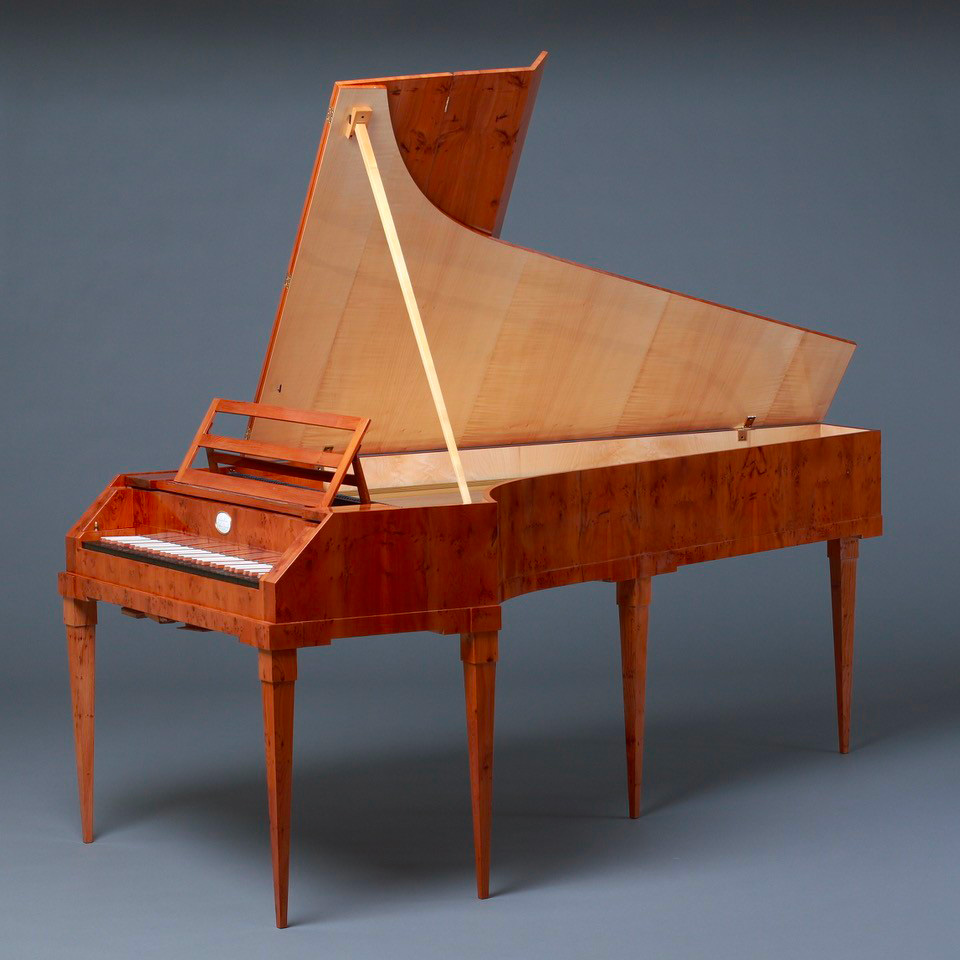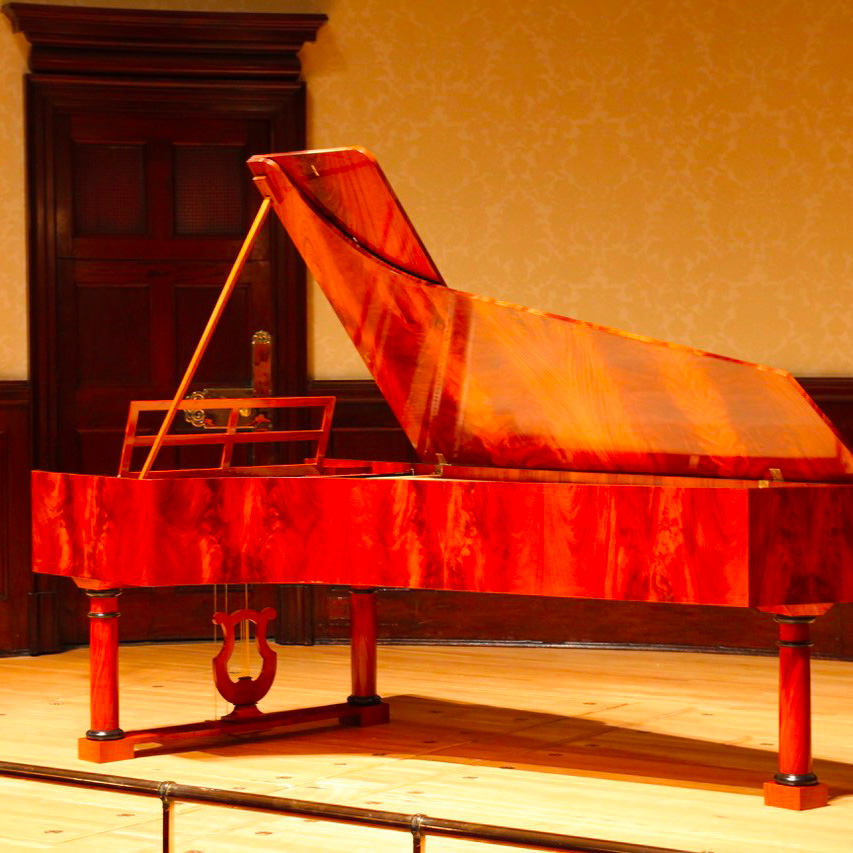Historical Pianos at the Rudolfinum
An extraordinary event will take place on 5 November at the Rudolfinum as part of the Rudolf Firkušný Piano Festival. Four historic instruments – a harpsichord and three pianos – from the years 1710, 1795, 1826 and 1848 will stand on the stage of the Dvořák Hall alongside the traditional Steinway. To be precise, three indistinguishable copies of historical instruments by Christoph Kern and one original from the workshop of the renowned Parisian piano builder Ignaz Pleyel, whose instrument was also owned by Fryderyk Chopin. That evening, pianist Alexander Melnikov will guide you through the virtuosic fantasy genre as it evolved from the 18th to the 20th century.
The following texts have been prepared by the author of copies of historical instruments, the master Christoph Kern, whose art and work can be found on this website.
Michael Mietke’s Harpsichord, Berlin ca. 1710
A 2013 copy by Christoph Kern
In his time, Michael Mietke was one of the most renowned instrument builders in northeastern Germany. His fame extended far beyond Berlin. He is closely associated particularly with Johann Sebastian Bach and his son Carl Philipp Emanuel Bach. Although little information has survived about what harpsichords J. S. Bach preferred or owned, we know for certain that he commissioned a large harpsichord from his employer in Köthen, made by Michael Mietke, on which he premiered his Brandenburg Concertos. Carl Philipp Emanuel Bach’s “working” harpsichord for Frederick II also came from Mietke’s workshop. The original of it has been preserved in Berlin’s Charlottenburg Palace. Mietke’s work is a fusion of the conflicting sound concepts of the Franco-Flemish tradition and the Italian tradition. His instruments are therefore suitable for a wide range of styles. The sonic (tonal) purity and richness of the registers make it easy to follow even complex voice leading. This makes them particularly suitable for polyphonic music. Mietke had an excellent knowledge of how to adapt different architectural styles. He was once even accused of forgery because he copied French instruments and sold them as imported goods at high prices.

Anton Walter’s Hammerflügel, Vienna 1795
A 2007 copy by Christoph Kern
At the end of the 18th century, Anton Walter was one of the best and most famous Viennese piano builders. One of his instruments was even owned by Wolfgang Amadeus Mozart, who had it transported all over Vienna for his Academy concerts. The instrument is now in Mozart’s house in Salzburg. Anton Walter’s pianos are often copied today, not only because he set a new high standard with his work, but because they represent an entire era. Beethoven also wanted a piano from Walter. However, Walter was unwilling to meet the composer’s special demands and, moreover, demanded the usual purchase price. Unlike his competitors, who always provided Beethoven with the latest models for free, Walter could probably afford this approach. Early pianos of this era usually have a range of five or five and a half octaves and two knee levers instead of pedals. One lifts the “dampers”, the other operates a mechanism that forces a thin substance between the hammer and the strings, producing a softer sound, as if the string were struck with a softer hammer.

Conrad Graf’s Hammerflügel, Vienna 1826
A 2019 copy by Christoph Kern
While the 19th century saw an acceleration in piano production, the size, scale of the keyboard, mechanics and musical aesthetic requirements were constantly changing. Two design approaches – English/French on the one hand and South German/Viennese on the other – competed with each other and differed significantly in mechanics and sound. In the 1820s, Conrad Graf reached a peak in the construction of the Viennese type of piano. His instruments are still among the most sought-after today and are unique not only in their technical but also in their tonal quality. Their sound is rich in colour and nuance, warm and “romantic” in the best sense of the word. This makes “ein Graf” an excellent choice for the late works of Beethoven and especially Schubert. As was customary at the time, the construction was all wood, with no iron frame or cast-iron plate. The hammers are not covered with felt but with leather. The sound can be changed by means of four pedals.

Ignaz Pleyel’s Hammerflügel No. 14897, Paris 1848
Original restored by Christoph Kern
The pianos made by Parisian piano builder Ignaz Pleyel had a lasting influence on 19th century piano compositions. They are characterised by their great variety of sound and are unsurpassed, especially in more intimate settings. Their sound is extremely melodious and malleable. They are closely associated with the work of Fryderyk Chopin, who owned several Pleyel instruments during his lifetime and held them in high esteem. His last piano, No. 14810, is housed in the Chopin Museum in Warsaw. It dates from the same year as the original, which will be presented in Prague, and is identical in construction. Pianos of this type were produced on a large scale and adorned many Parisian salons in the 19th century. They are an excellent testimony to the musical taste of the period in which they were made.



